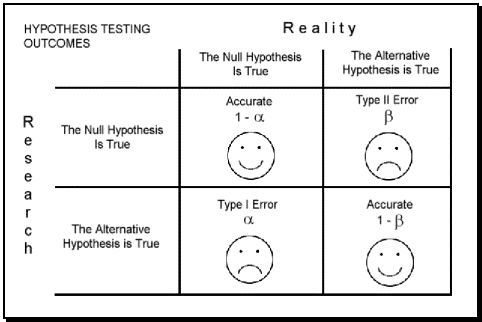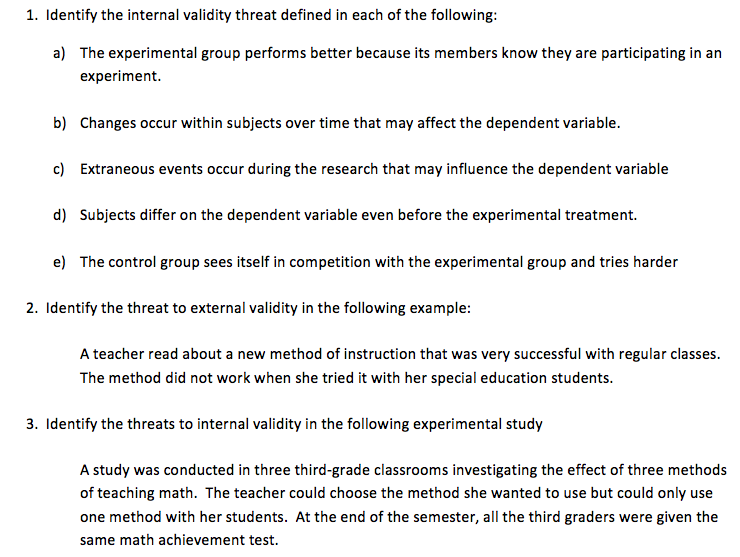Impressive Tips About How To Control For Threats To Internal Validity

The opinions of respondents depend on the recall time to gather opinions.
How to control for threats to internal validity. 3 threats to internal validity ' internal validity threats are generic categories of causal forces that may frequently obscure causal inferences. Attrition is a threat to internal validity when there is differential fallout between the intervention and the comparison groups. Threats to internal validity are essentially threats to causal control.
It is also necessary to accept that. One example of a threat to internal validity in the diabetes study mentioned above would be other variables that might lead to lower blood sugar. Without a control group, it’s harder to be certain that the outcome was caused by the experimental treatment.
Avoid by using control group instrumentation threat !the way a variable is measured changes during the study !counteract instrumentation !make sure observers are well trained ! However, in this design, there are threats to external validity (also called interaction effects. The controlled or experimental design enables the investigator to control for threats to internal and external validity.
A valid test measures what it is supposed to measure. The true experiment is considered to offer the greatest protection against threats to internal validity. Threats to internal validity compromise our confidence in saying that a.
We cannot control all the findings. A valid research design tests what it is supposed to test. Describe three threats to internal validity:
Threats to internal validity, timeline: One way to overcome this threat is by placing your treatment groups and control groups at different locations or time periods. These are called main effects which have been controlled in this design giving it internal validity.







![Pdf] Threats To Validity In Retrospective Studies | Semantic Scholar](https://d3i71xaburhd42.cloudfront.net/84eb1d3106e117d585d4f31502e244146499d4f4/2-Table1-1.png)

/internal-and-external-validity-4584479_final-a1cf2c26ce464856bb86fe5ceb99b17b.png)

![Threats To Internal Validity (Source: Adapted From [12]) | Download Table](https://www.researchgate.net/publication/291385212/figure/tbl3/AS:670460861763585@1536861734066/Threats-to-internal-validity-source-adapted-from-12.png)



